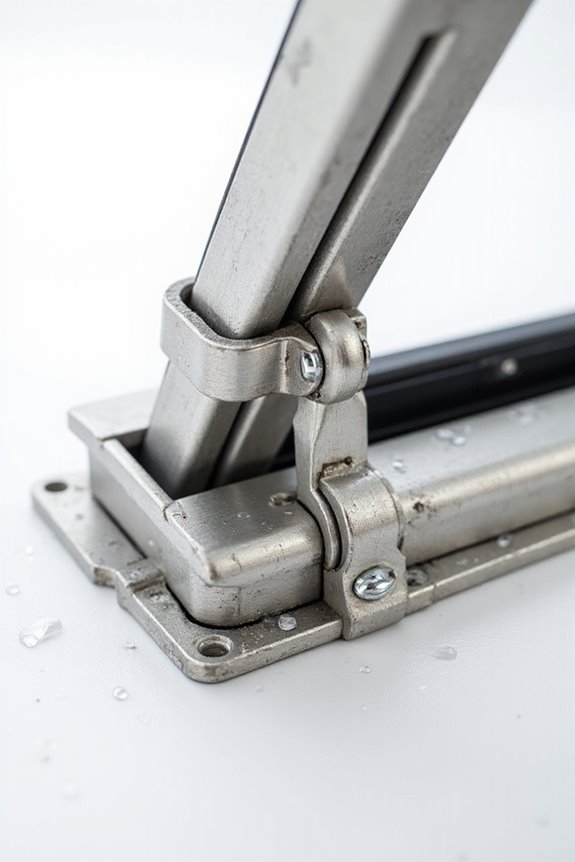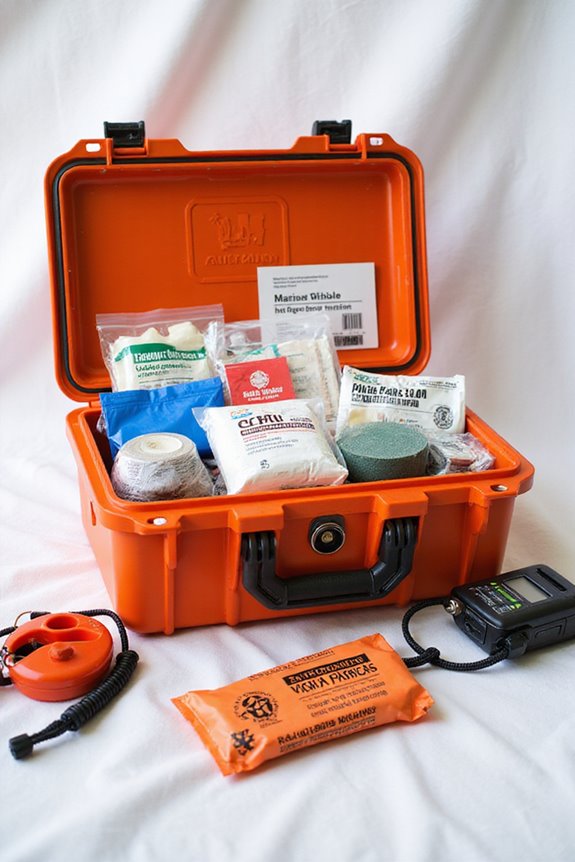Owning a yacht sounds dreamy, but budgeting? That’s the real challenge. We start with fixed costs like insurance, dock fees, and maintenance—usually 5-10% of your yacht’s value yearly. Then there are variable expenses: fuel, crew, repairs, and surprise fixes that can throw off your plan. Typically, operating costs run between 7-15% of value, but smart maintenance and financial tracking keep things smooth. Curious about squeezing the most from your yacht budget? Let’s explore how.
Key Takeaways
- Yacht operational budgets commonly range from 7% to 15% of the vessel’s value annually, covering fixed and variable costs.
- Fixed costs include insurance, depreciation, maintenance (5-10% of value), dockage, and yacht club memberships.
- Variable expenses like fuel, crew, maintenance supplies, and cruising frequency fluctuate and require active management.
- Preventive maintenance and flexible budgeting reduce unexpected repairs and support long-term cost control.
- Regular financial forecasting, cost monitoring, and real-time tracking tools ensure precise budget adherence and transparency.
Key Fixed Costs in Yacht Ownership
While owning a yacht might sound like endless luxury, it comes with a set of fixed costs that we can’t ignore if we want to keep our dream afloat. First, yacht insurance is non-negotiable; it protects our investment but varies based on the yacht’s size and where we dock. Then, there’s depreciation analysis—understanding how the value drops, especially in the first few years, helps us plan better for resale. Annual maintenance will eat up 5-10% of the yacht’s value, and let’s not forget dockage fees, which depend on location and yacht size. Crew costs can also be significant, especially for larger vessels, but they’re essential. By grasping these fixed costs early, we stay in control—after all, no one wants their dream to become a sinking ship! Additionally, considering membership costs at yacht clubs can provide insight into the overall financial commitment involved in the yachting lifestyle.
Identifying and Managing Variable Expenses

Now that we’ve gotten a handle on those steady, predictable fixed costs, let’s take a closer look at the variable expenses that can really keep us on our toes. Fuel management is a big one—usage varies, so efficient planning saves us from unexpected spikes at the pump. Then there’s crew optimization: hiring just the right number for trips prevents overstaffing while keeping things smooth. Don’t forget maintenance and supplies like harbor fees or provisions—they fluctuate with how often and where we cruise. What’s our secret weapon? Regular cost monitoring and smart APA planning to keep surprises in check. By negotiating with vendors and scheduling maintenance, we stay flexible and ready for anything. After all, managing these variables well means more time enjoying the yacht, less time juggling the budget.
Annual Operating Cost Benchmarks
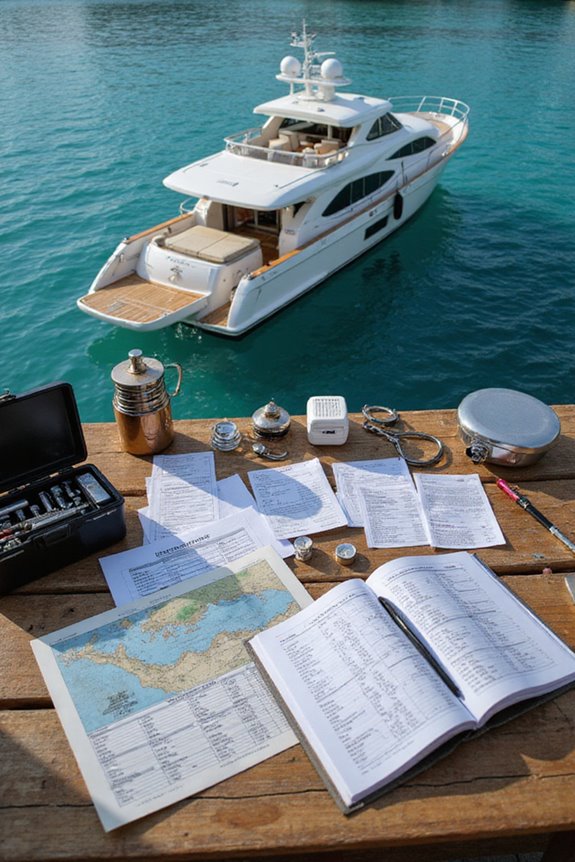
When it comes to budgeting for yacht ownership, a good rule of thumb is that annual operating costs usually run between 7% and 15% of the yacht’s value. These operational benchmarks help us set realistic expectations, but remember, cost percentages can shift based on where and how we cruise. For example, a 60-foot yacht worth $1 million might cost $100,000 to $150,000 yearly to maintain, fuel, and dock. Higher-end marinas and usage intensity push costs upward, sometimes closer to 20%. Have you considered insurance, taxes, or compliance fees? They quietly add up but are essential parts of the puzzle. Sticking to these cost percentages isn’t just smart—it keeps our shared passion afloat without surprise expenses sinking our enthusiasm. Let’s explore more soon!
Strategies for Effective Maintenance Budgeting
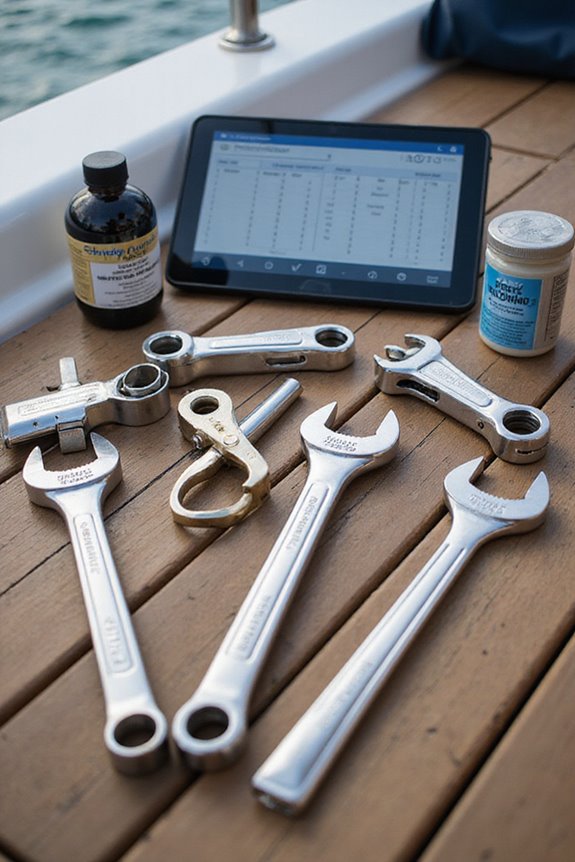
After looking at the bigger picture of yearly costs, it’s time to zoom in on how we keep our yachts running smoothly without breaking the bank. One key strategy we all swear by is preventive maintenance—regular check-ups catch small issues before they turn into wallet-busting problems. But let’s be honest: no matter how carefully we plan, surprises pop up. That’s why budgeting flexibility is a must. We set aside funds not just for routine upkeep but also for those unexpected fixes that will inevitably surprise us, especially with saltwater environments and complex equipment on board. Using spreadsheets to track expenses and prioritizing repairs—like engine care over cosmetic tweaks—also helps us stay on top of things. Additionally, investing in high-performance batteries can ensure that we have reliable power for all our essential devices while minimizing maintenance costs. Together, these strategies keep our yachts reliable and our budgets happier.
Financial Management Practices for Yacht Owners
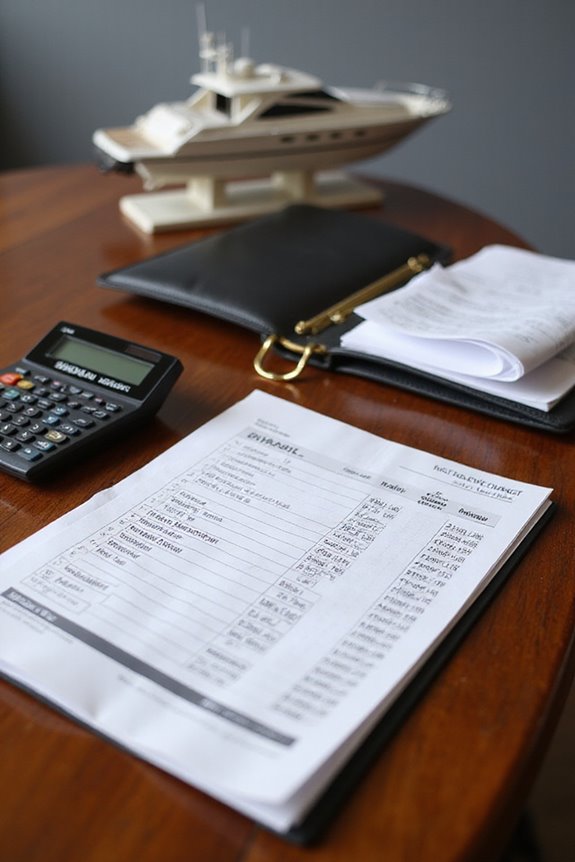
Anyone who’s owned a yacht knows that managing its finances isn’t just about watching the numbers—it’s about crafting a plan that fits your boat’s unique personality, so to speak. Financial forecasting becomes our trusty compass, helping us anticipate expenses across departments and avoid surprises. But what happens when the sea shifts? That’s where budget adjustments come in, letting us steer clear of storms like unexpected repairs or changing fuel prices. We’re not just crunching numbers—we’re building a flexible financial map. By regularly reviewing our budget and using real-time tracking tools, we stay on course with transparency and accuracy. After all, managing yacht finances isn’t just a task; it’s joining a crew dedicated to smooth sailing, both on water and in our bank accounts.
Crew Cost Considerations and Optimization
Although crew costs can make up a significant part of a yacht’s operational budget, they’re often the most flexible area to optimize without sacrificing quality or safety. When it comes to crew retention, investing in training programs and welfare perks isn’t just nice—it actually saves money by reducing turnover and boosting efficiency. Plus, who wouldn’t want a happy, motivated crew? On the recruitment side, selective hiring and using psychometric assessments help us find the right people faster. We can even lean on recommendations from current crew members to streamline the process. And let’s not forget smart scheduling and cross-training, which keep everyone versatile and costs in check. So, managing crew costs is less about cutting corners and more about being clever with how we attract and keep our talented team.
Docking and Location Impact on Expenses
We’ve talked about keeping crew costs in check, but running a yacht isn’t just about the people onboard—it’s also about where you park that floating palace. Dock pricing varies widely; a 63-foot yacht’s annual fees can jump from $20,000 to $50,000 depending on location. Prime spots—Miami, Monaco, or Southern California—come with premium dock pricing but often include top amenities, which bring location advantages like easier access to maintenance and social scenes. Off-peak seasons might offer discounts, so timing your stay can save a bundle. Ever considered negotiating long-term contracts or yacht club memberships? They can seriously stretch your budget further. In the end, choosing where to dock is about more than costs—it’s about lifestyle and making the most of your yacht experience.
Fuel Consumption and Efficiency Measures
When it comes to fuel consumption, size really does matter—think of your yacht’s engine as a thirsty giant or a frugal cat sipping fuel cautiously. Larger yachts, like superyachts, can gulp down hundreds of gallons per hour, while smaller or sailing yachts are much easier on fuel. So, how do we improve fuel efficiency and achieve consumption reduction? It starts with keeping engines well-tuned, maintaining a clean hull to reduce drag, and cruising at speeds that don’t make your engine gasping for air. Planning direct routes and lightening onboard loads also helps. Ever thought about hybrid propulsion or smart sensors? They’re game changers for efficiency. Together, these measures keep our fuel bills in check and guarantee smooth sailing without draining our budgets—or the planet.
Planning for Unexpected Repairs and Emergencies
Since yachts are complex machines exposed to unpredictable marine conditions, it’s smart to have a solid plan for unexpected repairs and emergencies. We all know the sea isn’t always kind—storms can cause damage ranging from a few hundred pounds to over £20,000. That’s why unexpected repair strategies are key. Setting up emergency repair budgeting isn’t just smart; it’s essential. Think of it like a safety net for costly surprises, from motor failures to hull breaches. How much should you stash? Experts suggest enough to cover towing, emergency fixes, and even mid-life refits, which can reach six figures. Regular maintenance helps, but emergencies happen. So, let’s commit to a plan ensuring our yachts stay ready—and that our wallets don’t get totally drenched by surprise costs. After all, who wants a yacht drama on top of the waves?
Frequently Asked Questions
How Does Yacht Depreciation Affect the Overall Budget Planning?
We understand depreciation impact is essential for accurate budget forecasting. By recognizing how yacht value declines, we can plan maintenance, account for resale value, and adjust expenses—ensuring our financial strategies stay smart and connected to real-world changes.
What Are Common Tax Benefits or Deductions Available to Yacht Owners?
When it comes to yacht ownership, we can benefit from tax deductions like business use expenses, Section 179, bonus depreciation, and mortgage interest for second homes. These deductions help us maximize savings and enjoy our investment together.
How Do Seasonal Weather Patterns Influence Yacht Maintenance Schedules?
Imagine the weather shifts, and suddenly our yacht’s care demands change too. We understand weather impacts dictate maintenance timing—spring’s cleaning, summer repairs, autumn prep, and winter protection—bonding us through shared seasons and smart upkeep rhythms.
What Insurance Options Best Cover International Yacht Voyages?
For international yacht voyages, we recommend hull insurance paired with crew coverage to guarantee everyone’s protected. Together, these offer peace of mind traversing diverse waters while staying compliant and connected as a responsible, united yachting community.
How Can Technology Integration Reduce Long-Term Operational Costs?
We all know smart automation and data analytics can practically run the yacht for us, slashing an ocean of costs! By embracing these tools together, we create a community focused on smarter, more efficient operations.


